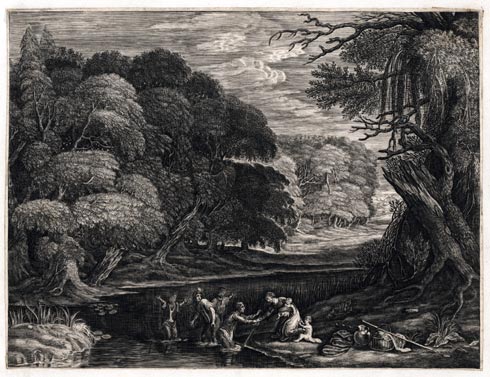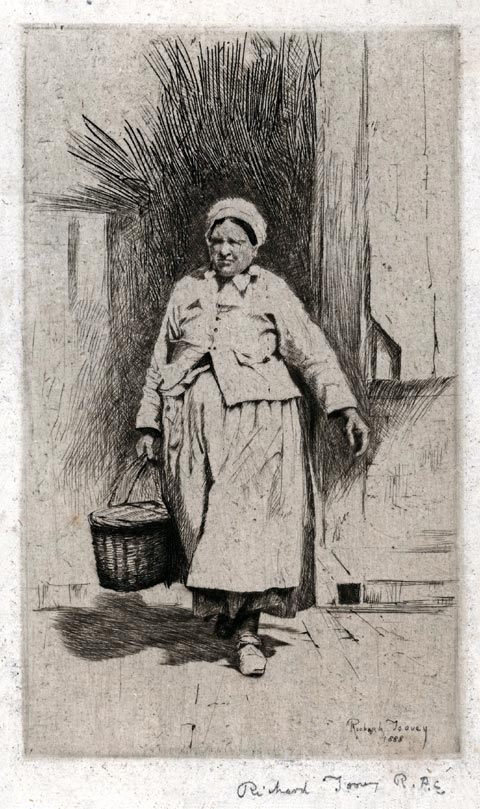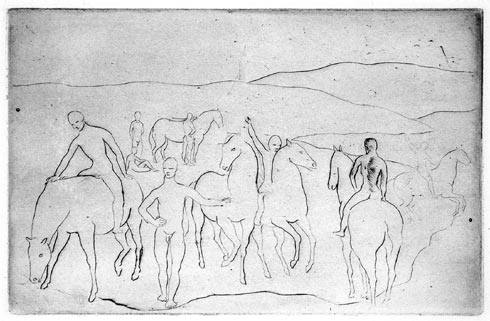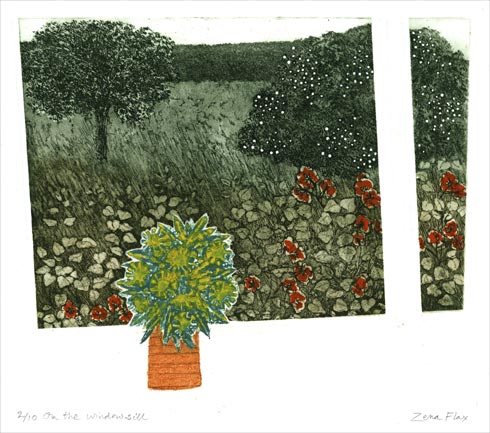The
Home Page Selection
If
you require further information on any
print featured here, please contact
us.
When
a print has been sold it will be marked
as Sold.
A
growing archive of selections
from previous Home pages is featured in
the
Home
Page Selection Archive |
|
See
also :
Click
on a thumbnail (left)
to link directly with the entry for that
print, or scroll down to view all the selected
prints from the current Home
Page.
Images
are not to relative scale (see stated dimensions) and also at only modest resolution.
If you wish to view extracts of an image at higher resolution, please Contact us.
|
|
|
|

| |
MAGDALENA VAN DE PASSE
Cologne c1600 – 1640 Utrecht
Magdalena was the daughter and pupil of the engraver and publisher Crispin van de Passe the Elder, founder of an internationally acclaimed family of engravers. A native of Zeeland he spent his early career in Cologne, where he married and his four children were born. In 1612 the family moved to Utrecht because of their Mennonite faith. They all became engravers of repute.
Magdalena first signed a plate when she was only fourteen. Her early work was very close to her father’s style but about 1620, influenced by the engraver Hendrick Goudt, who had been a pupil and collector of Adam Elsheimer in Rome, she developed an interest in chiaroscuro.
She was unique in the family in engraving landscapes, though peopled with small narrative figures, either classical or figurative.
All her plates were engraved to other artist’s designs.
She was much admired in her day and celebrated in contemporary poetry. Adrian van de Venne wrote in 1623 “you, young lady, who hone your graving tools Skilfully and surpassing well…”.
Latona and the Lycean Peasants
Hollstein 6
199 x 260 mm (sheet)
Engraving, after a painting by Adam Elsheimer.
A good impression, but trimmed to the plate on three sides and immediately below the image at the foot, hence lacking the inscription.
Trace of a central vertical fold.
Mounted onto an album sheet.
£350
In Greek mythology, Latona, the mother of Apollo and Diana, when thirsty from much travelling, stopped to drink at a lake in Lycia, but was prevented from doing so by some peasants who were working in the osier beds. She immediately punished them by turning them into frogs.
The subject was a popular theme of paintings and garden sculpture in the 17th century.
Return to top ^ |
|
|
|

|
|
RICHARD TOOVEY R.E.
Brussels 1861 – 1927 Leamington Spa
A painter and etcher, the son of a painter and art teacher, Toovey trained in Birmingham and Paris.
He exhibited at the Royal Academy from 1880, and was elected to the Royal Society of Painter-Etchers in 1885.
Sadly, only four years later, a breakdown and partial blindness put an end to his career.
Though he had already etched over thirty plates, his work is rarely encountered.
(Country Woman carrying a Basket)
149 x 89 mm
Original etching, 1888.
Signed in pencil.
Printed in brown-black ink on thin laid paper.
£250
Return to top ^ |
|
|
|
 |
|
PABLO PICASSO
Malaga 1881 – 1973 Mougins
In 1905 Picasso moved away from his blue period with its gloomy subject matter to the tender melancholy and warmer colours of his pink period.
He also began seriously to engage in printmaking.
His monochrome drypoints, from this year, like his contemporary paintings and drawings, were concerned with strolling players, the characters Harlequin and Pierrot; and circus performers – clowns, acrobats and equestrian artists.
Picasso was a regular visitor to the Cirque Medrano, close by his Montmartre studio in Le Bâteau Lavoir.
Only a few proofs were pulled from Picasso’s plates at this period.
Eight years later, after he had become Picasso’s dealer, Ambrose Vollard bought the plates and published the only formal edition of the fourteen Saltimbanque subjects.
The plates were steel faced for the edition.
L’Abreuvoir  The Watering Place The Watering Place
Geiser 10b, Bloch 8
120 x 187 mm
Original drypoint, 1905.
From the usual Vollard edition, 250 on wove (+ 28 or 29 on antique japan), the only edition, 1913.
Printed with plate tone on cream wove paper.
£5000
There was an abreuvoir in Montmartre, very near Le Bâteau Lavoir, on the other side of the hill to the Cirque Medrano.
Now just a dip in the road, it is recorded in the street name, rue de l’Abreuvoir.
Return
to top ^ |
|
|
|
 |
|
ZENA FLAX
Born London 1930
Zena trained as an illustrator and typographer at Chelsea 1949-53, before attending the Central School of Art, 1953-55, where she concentrated on etching.
She was a founder member of Printers Inc, an intaglio workshop.
In the 1990’s she described her work as
“a response to a place – buildings, landscape and more recently, gardens.” “…natural movement and light has become a prime concern”.
She began to mix media on her etchings plates, using embossing and collagraph methods in addition to traditional acid biting, which “results in the etching plate becoming a piece of low-relief sculpture”.
On the window-sill
261 x 329 mm
Original mixed media colour etching.
Signed in pencil, entitled and numbered 2/10.
Printed in colours and with blind embossing, on stout cream
Somerset wove paper.
£400
Return
to top ^
|
|
|
|
|
|
|
|